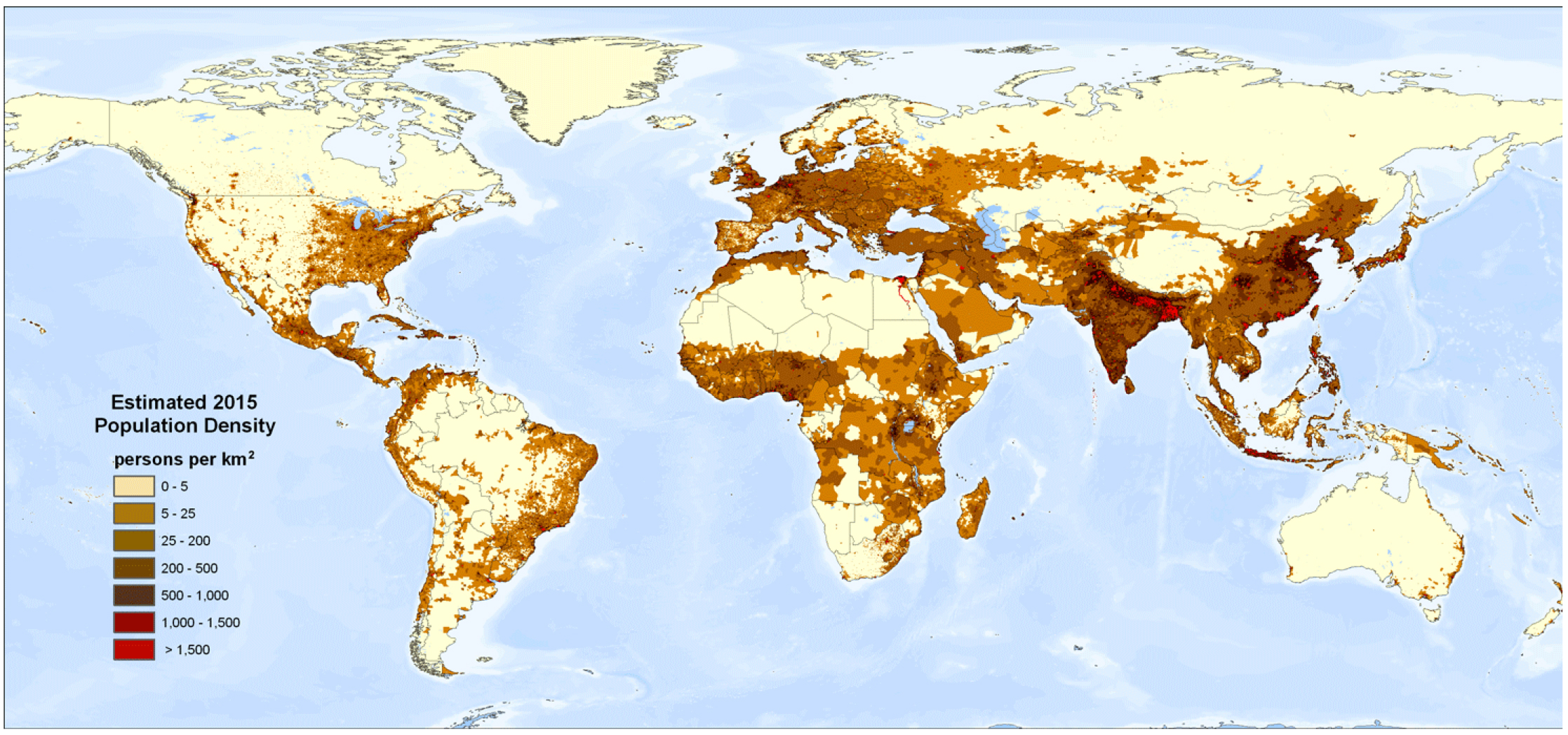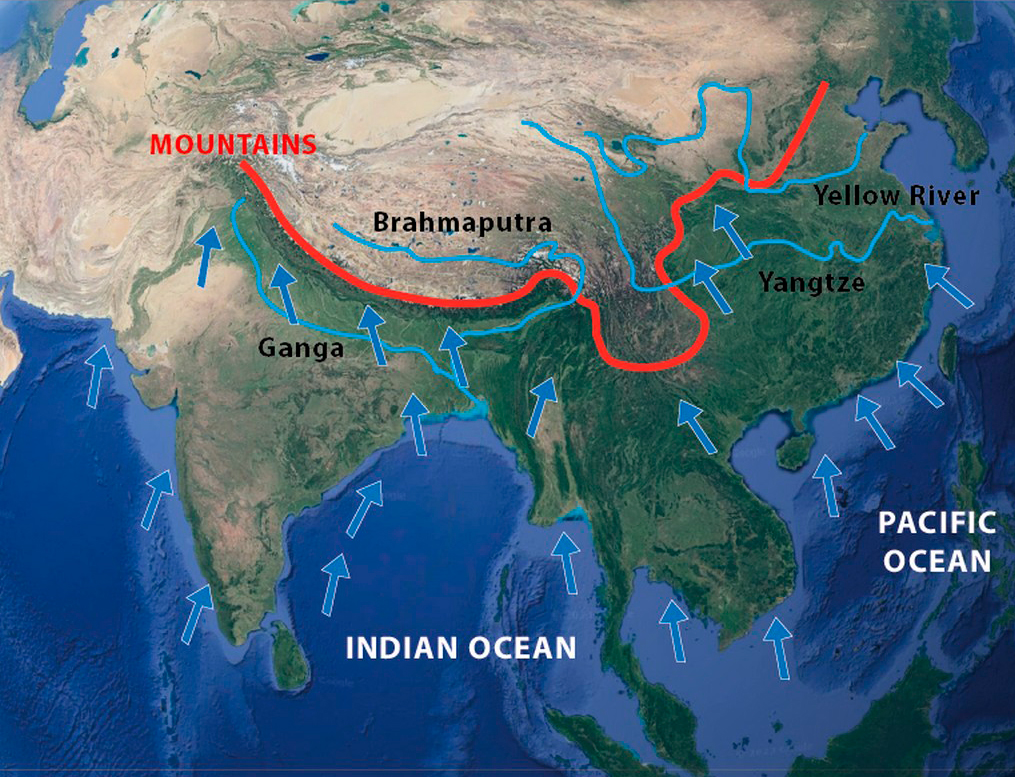Over 3.45 billion people live between Asia’s southern and eastern regions, from Pakistan to China, accounting for 43% of the world’s population. A glance at any population density map reveals a few prominent areas: the Indus, Ganges, and Brahmaputra river basins in Pakistan, India, and Bangladesh, respectively, and the Yellow and Yangtze River basins in China. These regions collectively cover over 5.1 million km² and are home to approximately 1.2 billion people.

Agricultural expansion, which began thousands of years ago, still plays a crucial role in ensuring food security for the majority of the world’s population. © pexels-timmossholder
Over 3.45 billion people live between Asia’s southern and eastern regions, from Pakistan to China, accounting for 43% of the world’s population. A glance at any population density map reveals a few prominent areas: the Indus, Ganges, and Brahmaputra river basins in Pakistan, India, and Bangladesh, respectively, and the Yellow and Yangtze River basins in China. These regions collectively cover over 5.1 million km² and are home to approximately 1.2 billion people.

The most densely populated areas (highlighted in red) correspond to the watersheds of major Asian rivers, primarily the Ganges, Brahmaputra, Yellow River, and Yangtze. In these basins, water and sediment have provided exceptional fertility to the land. © SERC United Nations Environment Programme, Global Environmental Alert Service</a> Center for International Earth Science Information Network – CIESIN – Columbia University, and Centro Internacional de Agricultura Tropical – CIAT. 2005.
The Ganges and Brahmaputra Basins, Upwind of the Himalayas
What has caused this demographic build-up? The answer involves many factors, with geology playing a particularly significant role. The Indus, Ganges, and Brahmaputra basins offer an excellent example.
Fifty million years ago, during the Eocene period, the Indian and Eurasian tectonic plates collided. The immense pressure from this collision led to the formation of the Himalayas, the highest mountain range in the world.
The water cycle has ultimately shaped the area’s biosphere. In summer, the land heats up more than the sea, transferring this heat to the rising surface air and creating a low-pressure zone that draws in cooler oceanic air. This process generates moisture-laden southerly winds, which collide with the mountain ranges and release abundant rainfall.
Over millions of years, runoff from this water formed great rivers that, carrying sediment, created fertile lands where vegetation thrived. A similar phenomenon occurred in China, involving the formation of the Yellow River and Yangtze River basins. Sediment from the waters of the western plateaus and mountain ranges created nutrient-rich soil irrigated by oceanic rainfall.

South Asia’s unique orographic configuration causes oceanic winds to collide with high mountain ranges, forming mighty rivers. This dynamic supports the agriculture on which more than 1.2 billion people depend. © We Are Water Foundation.
The Agricultural Revolution
Historians estimate that Homo sapiens arrived on the Indian subcontinent approximately 70,000 to 50,000 years ago, during the Upper Paleolithic. They migrated from Africa via various routes, likely following the southern coast of Asia or through the Middle East. These early humans were hunter-gatherers who thrived on the rich biodiversity of the mighty rivers flowing from the Himalayas.
These humans overcame the climatic changes brought about by the last glaciation, which ended around 11,000 years earlier, and many settled. This shift towards a sedentary lifestyle set the stage for the advent of agriculture. As temperatures rose, annual cycle plants proliferated, providing easily storable wild grains and tubers.
The foundation for the advent of agriculture was established. Hunter-gatherers began to sow crops. In the Indian subcontinent, wheat, barley, and jujube were cultivated around 9,000 years ago, followed by the domestication of sheep and goats. The Mehrgarh culture, thriving between 8000-6000 B.C.E., perfected cereal cultivation and livestock husbandry and achieved the first domestication of the elephant.
Similarly, farmers in the Yellow River and Yangtze basins in China adapted cereal cultivation to the alternating dry and rainy seasons, storing surplus crops for lean periods.
Dependence on Climate and Land Management
The transformation of the way of life was radical. Hunter-gatherers depended on water solely for drinking, whereas sedentary farmers became heavily reliant on rainwater for food production. A prolonged drought could lead to famine and death. This necessity led to the development of irrigation, which began in the Indus Valley around 4500 B.C.E.
Archaeological evidence of an animal-drawn plow in the Indus civilization dates back to 2500 B.C.E. While animal husbandry offered muscle power and a food source, it also brought about new challenges. It heightened dependence on the climate and required organized land management.
Paleontologists and historians argue that while individual farmers may have experienced a decline in their quality of life compared to their hunter-gatherer ancestors, the benefits for the species were significant. Despite the lower quality of food—obtaining animal protein became costlier and more exclusive—the abundance of crops facilitated a population increase. Villages multiplied, with populations gradually swelling from hundreds to thousands. This growth gave rise to cities, crafts, and increased waste generation, hastening the transformation of the environment.
A new concept of territoriality emerged, closely tied to access to water, climate, and soil fertility. These factors played a crucial role in the extensive population growth in the river basins of Pakistan, India, Bangladesh, Burma, Laos, Cambodia, Vietnam, and China. In contrast, regions like the Amazon and equatorial Africa, dominated by dense jungle vegetation, hindered large-scale agricultural development, thus significantly containing demographic expansion.
Watersheds as Indicators of Our Progress
Today, according to the FAO, crops account for most global food production, with approximately 83% of human calorie consumption coming from cultivated plants. Livestock plays a significant role in providing protein and other nutrients, contributing to around 17% of calorie production worldwide. Fisheries and aquaculture supply a smaller proportion of nutrients, providing over 17% of animal protein intake and 7% of protein consumed globally from fish and fishery products.
Climate change, overexploitation, and water pollution are already endangering regions like the Brahmaputra and Ganges basins. The responsibility for food security continues to hinge on the delicate equilibrium of water and soil fertility shaped by terrain and climate, with these Asian basins serving as significant barometers of our progress. Despite technological strides in soil management, over half of the global population relies on maintaining this ancient equilibrium.

Fisheries and aquaculture supply a smaller proportion of nutrients, providing over 17% of animal protein intake and 7% of protein consumed globally from fish and fishery products. © pexels-quang-nguyen-vinh





